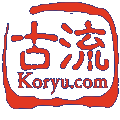Some Identifying Characteristics of Nihon Jujutsu
by Dr. Stephen M. Fabian
Onegaishimasu . . . Arigato gozaimashita .
With these formal expressions of courteous request and gratitude, students of Hontai Yoshin Ryu jujutsu begin and end, respectively, their paired training in jujutsu kata. The words accompany humble bows made from the traditional seiza , a kneeling position in which one's buttocks are firmly settled onto the heels of upturned feet. This exchange is indicative of the nature of Nihon --truly Japanese-- jujutsu.
Traditional jujutsu is a koryu , or ancient style of Japanese martial art. Although there were and are many ryuha or systems of Japanese jujutsu, there are features that are characteristic of most (if not all) of them. Since there seems to be a number of relatively new martial systems identifying themselves as jujutsu these days, it is appropriate to look at those characteristics which distinguish a style as traditional Japanese jujutsu.
Heritage.
All Nihon jujutsu will have a verifiable history and ryu lineage, including a list of past ryu heads or soke . These details are often contained in the system's makimono (scrolls) or are otherwise recorded. (Unfortunately for most Americans, such information is hardly helpful since the script in which it is recorded will be unintelligible.) Other cultural indicators which can help give one a sense of the traditional character of a school include:
- as mentioned above, training in Nihon jujutsu takes place within an atmosphere of courtesy and respect, a context intended to help cultivate the appropriate kokoro , or "heart";
- the type of dogi or training suit worn, which is usually plain white, often with a dark hakama (the most colorful uniform might be plain black or the traditional blue of quilted keikogi ; anyway, you are not likely to see stars and stripes or camouflage uniforms);
- lack of ostentatious display, with an attempt to achieve or express the sense of rustic simplicity (expressed in such concepts as sabi and wabi in Japanese) common in many of Japan's traditional arts;
- the use of the traditional -den (e.g., Shoden, Chuden, Okuden, and Menkyo Kaiden levels) ranking system, perhaps as a parallel track to the more contemporary and increasingly common -kyu/-dan ranking; and
- to borrow a characterization for all koryu as expressed by Wayne Muromoto, editor of Furyu , there is the lack of "tournament trophies, long-term contracts, fancy tags and emblems, rows of badges or any other superficial distractions." (Furyu , Vol. 1 No. 1, p. 23).
Technical characteristics.
Although there is some diversity in the actual look and techniques of the various traditional jujutsu systems, there are significant technical similarities:
- students learn traditional jujutsu primarily by observation and imitation as patterned by the ryu's kata or prearranged forms;
- most kata emphasize joint-locking techniques, that is threatening a joint's integrity by placing pressure on it in a direction contrary to its normal function, or take-down or throwing techniques, or a combination of take-downs and joint-locks;
- very occasionally a strike (atemi ) targeted to some particularly vulnerable area will be used to help create kuzushi (break in balance) or otherwise set-up the opponent for a lock, take-down or throw;
- force essentially never meets force directly, nor should techniques need to be strong-armed to be effective: rather, there is great emphasis placed on flow (which follows from the art's name, in which ju connotes pliability and suppleness) and technical mastery;
- movements tend to emphasize circularity, and capitalize on an attacker's momentum and openings in order to place a joint in a compromised position or to break balance as preparatory for a take-down or throw;
- the defender's own body is positioned so as to take optimal advantage of the attacker's weaknesses while simultaneously presenting as few openings or weaknesses of its own; and
- the common inclusion in the ryu of cognate weapons training (also using kata as a primary instructional method), stemming from the historical development of jujutsu and other koryu when active battles were waged. Weapons might include, for example, the roku shaku bo (long staff), han bo (short staff), katana (long sword), kodachi (short sword), and tanto (knife), some of the main repertoire of traditional weaponry.
Philosophical dimensions.
Although jujutsu and the koryu in general often do not have the suffix -do or "way" to designate them as paths toward spiritual liberation and inner development, there are some philosophical and mental components which have significance and application in these systems at least because of their value in developing the actual combat effectiveness of the practitioner. These include:
- an all-encompassing awareness, zanshin , in which the practitioner is ready for anything, at any time;
- the spontaneity of mushin (literally "no mind") which allows immediate action without conscious thought; and
- a state of equanimity or imperturbability known as fudoshin .
Together, these states of mind/being tremendously strengthen the koryu practitioner, allowing him/her the utmost potential for effective action. Such effectiveness and the technical competence and mental mastery on which it stands, however, is possible only after a considerable period of serious and devoted training, a veritable forging of the spirit as expressed in the concept of seishin tanren .
These various characteristics or components, taken together, largely describe the principal elements of traditional Japanese jujutsu. Alerted to them, a student will have some reasonable ability to assess the relative traditional nature and authenticity of a system of jujutsu. If most or all of these characteristics are not noticeable in a so-called jujutsu system, then the legitimacy of the system as bona fide Nihon jujutsu is highly suspect. This is not to say that the system or school in question does not offer a good training program or effective techniques. It simply suggests that such a "jujutsu" school or system may be more accurately labeled with some other term.

Contact Koryu.com
Last modified on December 27, 2017
URL: https://koryu.com /library/fabian1.html
Copyright ©2022 Koryu Books. All rights reserved.
